
We have been interested in this Grand Circle River Cruise for quite a while. We were happy that when we signed up for the trip at the last minute, due to some free time which became available in July, we were able to arrange all the details which we wanted.This trip was certainly not an easy one by any means, as it included visits to five countries in Eastern Europe: Hungary, Croatia, Serbia, Bulgaria, and Romania. They each have a unique history, of which we knew very little. Our only exposure to the cultures, which Janice and I had shared a little bit together, came when we were in the Illini Folk Dance Society. We both liked their native folk dances quite a bit. We enjoyed, for example, many Serbian and Hungarian dances every Tuesday for more than five years, during the mid-sixties. After many years of war and oppression, at present these five different countries have their own goverments and use five different currencies, even though four of them are in the European Union! The following map may summarize the trip. The blue line represents the cruise part of our trip with the River Adagio. As you can see, we stopped at Ruse, in Bulgaria, as the Danube bcame too shallow there to continue our cruise. We changed to four buses to continue our trip to a town in Bulgaria, named Varna, which is a resort on the Black Sea (instead of to Constanta in Romania which was the original trip plan). The cities underlined with red were the ones where we stopped to visit, while on the boat or on buses.

Mainly, we stayed in Budapest. Since Janice and I had been there three years ago, we were sort of familiar with the city. Our boat was docked near the Rakoczi Bridge on the Buda side. On the second night, the boat was moved to the Pest side near the center of the city, where most of the action occurs, near the Chain Bridge.
. 
As you can see, the Buda Castle and the Chain Bridge are in the background of the following picture.You could not find a better place to dock the boat in this beautiful city. It was just a wonderful treat for two nights.
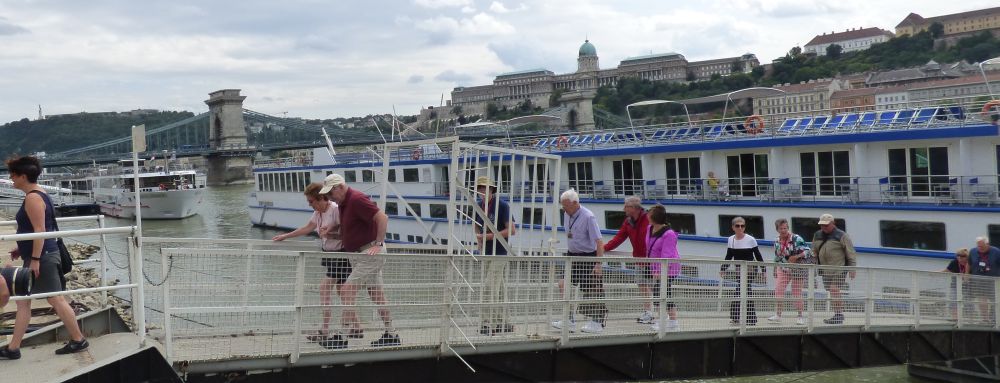
And from another angle: 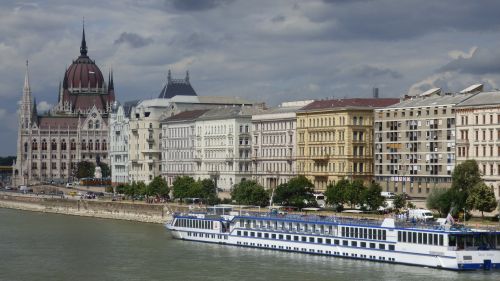 Yes, that is the famous Parliment Building on the left side of the picture.
Yes, that is the famous Parliment Building on the left side of the picture.
The Parliament Building is so famous, I tried to take a picture to post here which would be unique and impossible to duplicate. How did I get such a picture!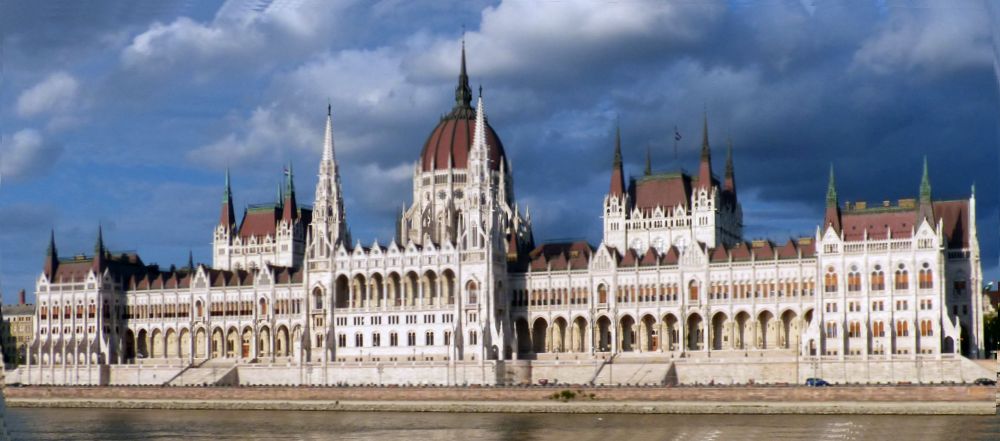
The city tour gave us a glimpse of a lot of famous places which you can see the on the internet, such as the St. Steven's Cathedral and the Parliament Building.
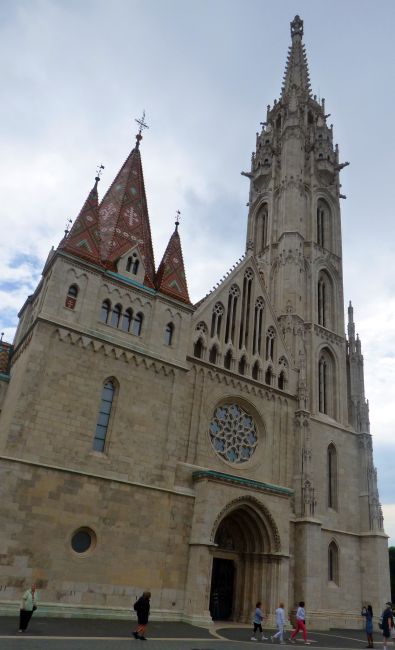 It's roof is just beautiful!
It's roof is just beautiful! 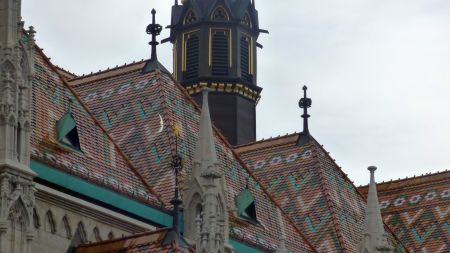
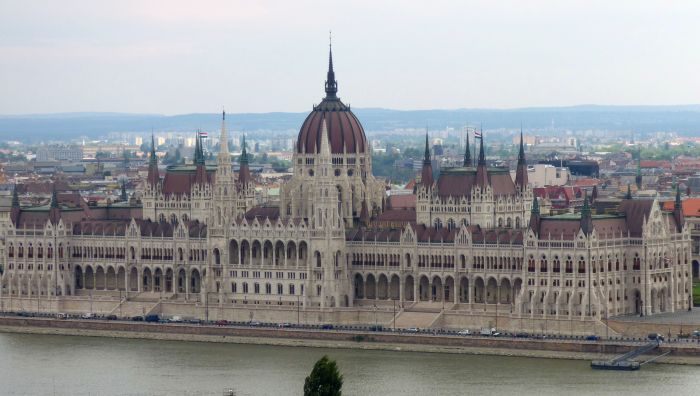 from top of the hill!
from top of the hill!
Of course, you can also see things which will surprise you, such as red peppers.  No, Hungarian food is not HOT!
No, Hungarian food is not HOT!
On the side of the Parliment Building near St. Steven's Cathedral is the statue of a common man: Atilla Jozsef. 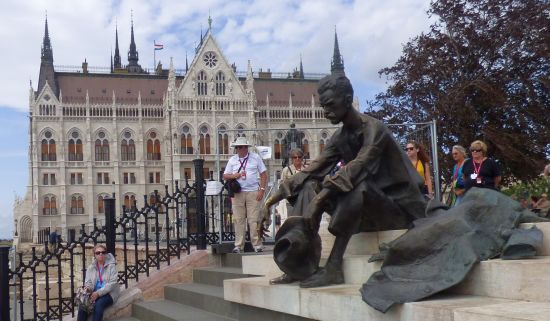
And just before that you can see a remembrance of a sad story about Jewish men, women, and CHILDREN, who were killed at the river after being told to leave their shoes on the shore: 
We had an evening of cruising along the river to see the lights on the bridges and monuments, which was just specutacular! 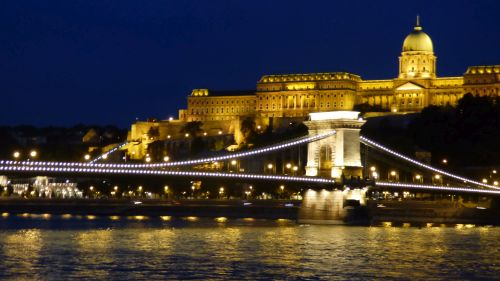

We went to Heroes' Square to visit again. It is nice to repeat something once a while, so we can try not to forget!
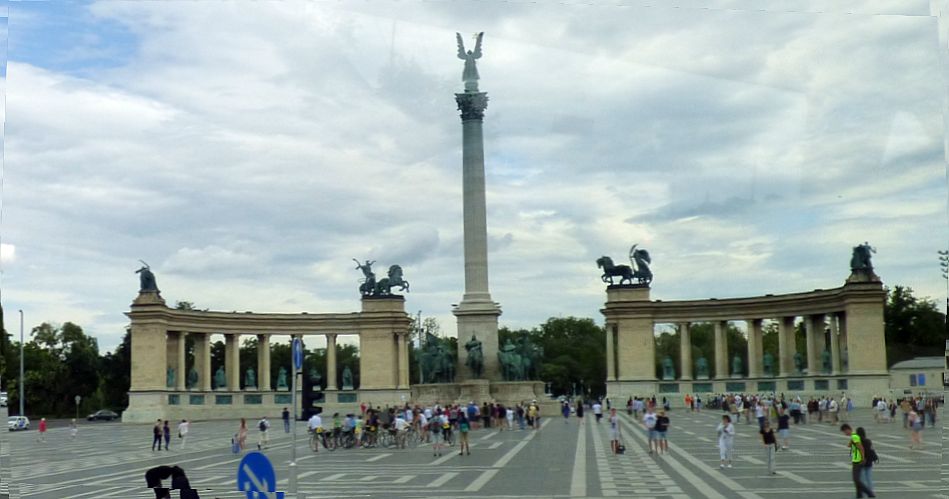
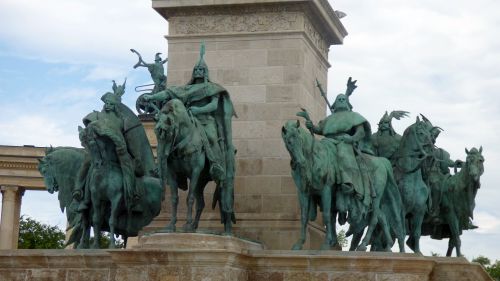 The seven Magyar leaders who conguered this region centuries ago. (European leaders later thought that they were Huns and so named the country Hungary!)
The seven Magyar leaders who conguered this region centuries ago. (European leaders later thought that they were Huns and so named the country Hungary!)
Janice and I did explore, on our own this time, an Island in the Danube. We walked to Margaret Island, a two mile walk from the ship to the island's fountain. It was another five miles to go around the island. There is a running path and a bicycle track around the island, and two flower gardens, with a hotel and other things to enjoy! The following google map can give you a sketch of the path to get there, and the sign will show you what you can see on the island:
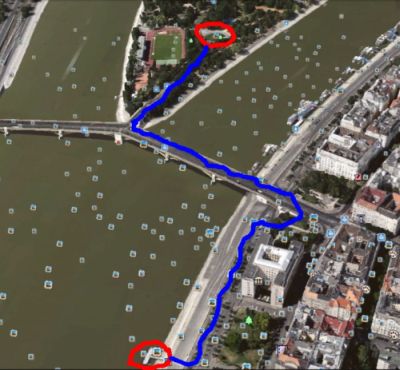 The blue path is two miles from the boat to the fountain on the island, which are circled in red.
The blue path is two miles from the boat to the fountain on the island, which are circled in red.
 Sorry, I cannot read this either!
Sorry, I cannot read this either!
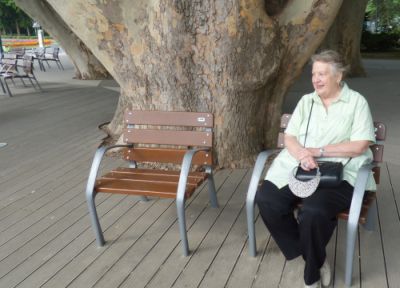 Janice found a shaded spot by hugh tree to rest. When I came back she was watching the Water Fountain Show with some others:
Janice found a shaded spot by hugh tree to rest. When I came back she was watching the Water Fountain Show with some others:
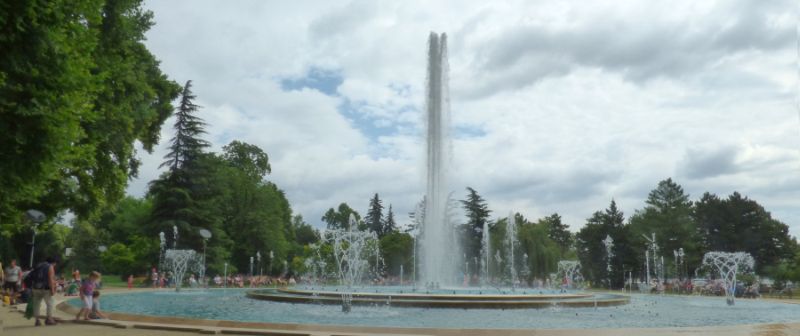
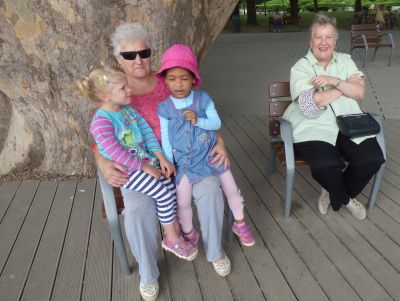
. 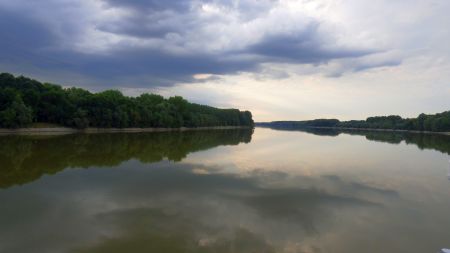 All is calm!
All is calm!
We had to show our passorts at 5 am in Batina, Croatia. Yes. you read that correctly - 5 am! 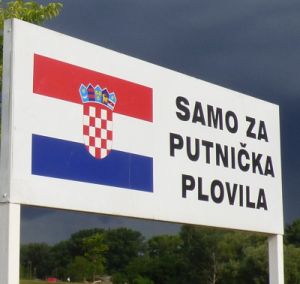
Then, after breakfast, we loaded everyone into four buses and went to visit Osijek. And, finally, we met our boat again in Vukovar, a war-torn town almost destroyed during the 1990 shelling.
We started to see corn fields everywhere:  then there were storks:
then there were storks: 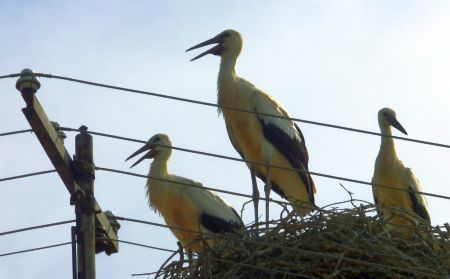
Note all of the wires, which you see every where in Eastern Europe! What else? To my surprise I saw a lot of women smokers:
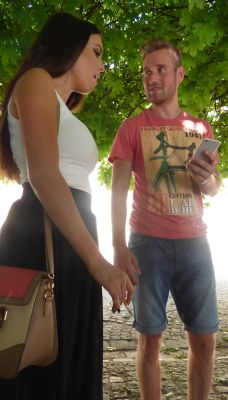 and cell phones, of course!
and cell phones, of course!
There were two important surprises in this one day trip. We had a great home-hosted lunch at a young single mother's home. 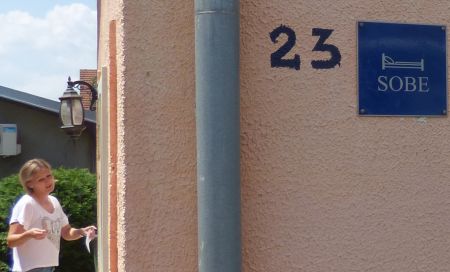
Notice the sign which indicates that she has a bed-and-breakfast to help with finances.
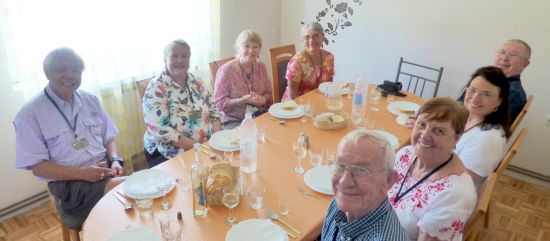 We were the group who ate together with our hostess.
We were the group who ate together with our hostess.
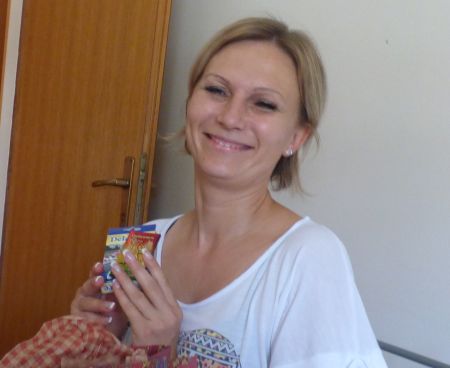 She had such a smile when she opened the gifts from us! Can you believe that she has a 19 year old son!
She had such a smile when she opened the gifts from us! Can you believe that she has a 19 year old son!
Another surprise was that the 1975 Nobel Prize winner, organic chemist Vladimir Prelog, was from this town Osijek!
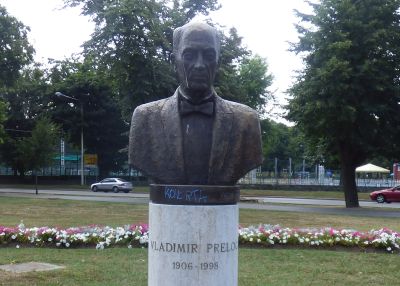
The town where we met our boat again is the city which was most shelled during the war in the 1990s. The evidence was preserved:
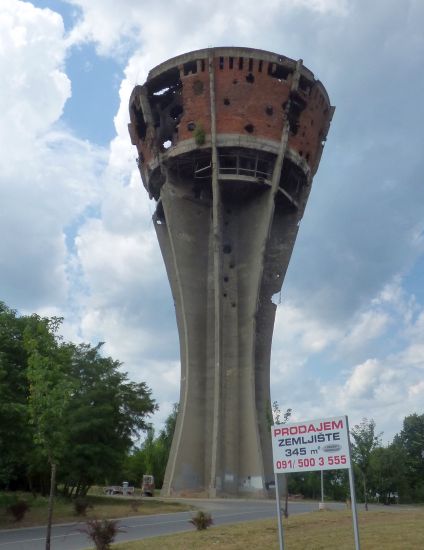
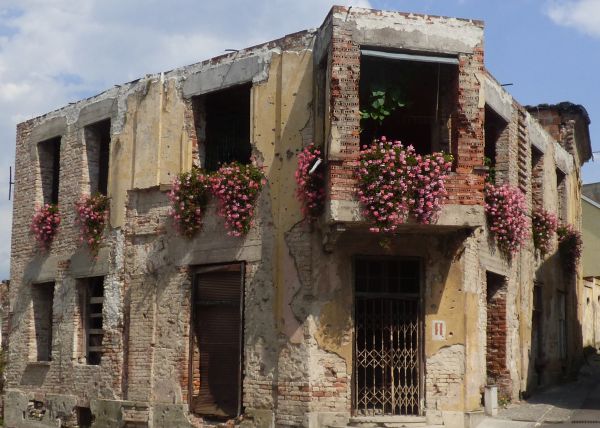
But now people are trying to recover their normal lives. We saw that they take advantage of the weather and the beach on the Danube:
